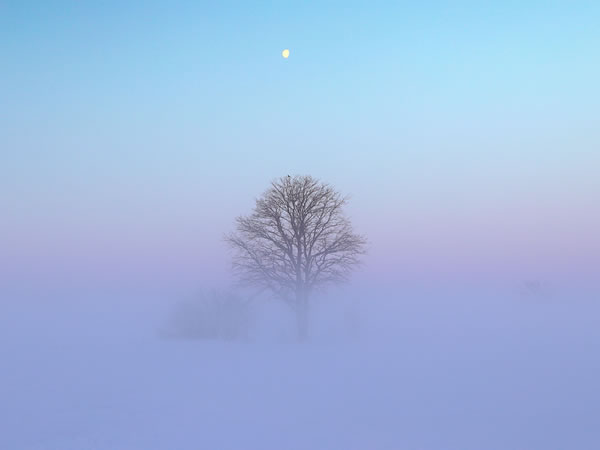Ice Fog
Fog occurs when the air becomes so saturated that it can no longer hold water vapor. Fog can also be defined as a low-lying cloud. Conditions are considered "foggy" if visibility drops to below one kilometer (0.62 miles). There are several kinds of fog: Radiation fog occurs during fall nights when warm air radiates from the ground or surface of the water and meets cool air. This kind of fog often clings close to the ground but gradually disappears as the day warms. Advection fog occurs when wet air from a water surface passes over the cooler surface of a land feature. This kind of fog is common near the ocean. Freezing Fog, sometimes referred to as pogonip, occurs during cold winters, usually in deep mountain valleys. Freezing fog occurs when fog droplets freeze to surfaces resulting in hard rime (white ice). Ice fog is a rare type of fog that usually only occurs in the Arctic or Antarctic. It forms when freezing air temperatures retain humidity and form tiny ice crystals rather than water droplets.
Fog over London, UK
|
||

